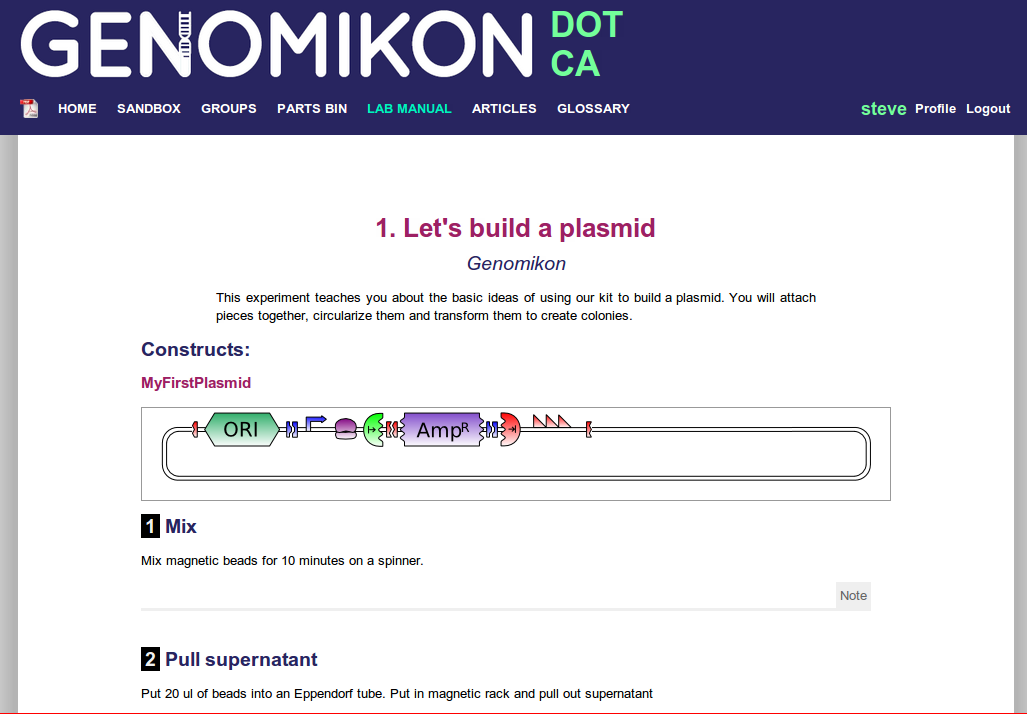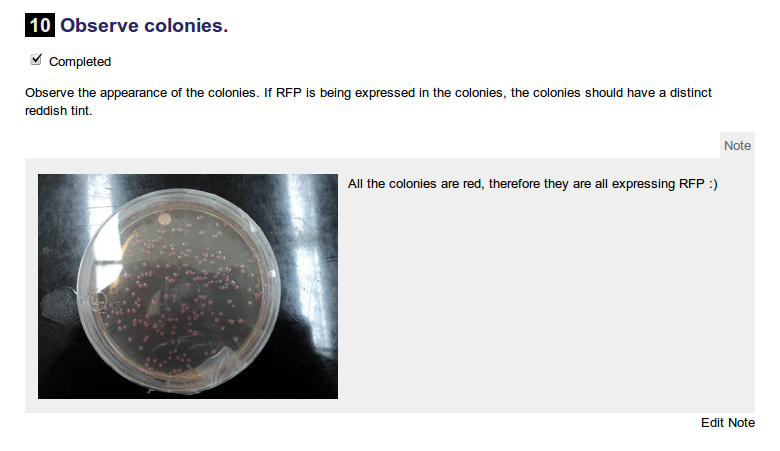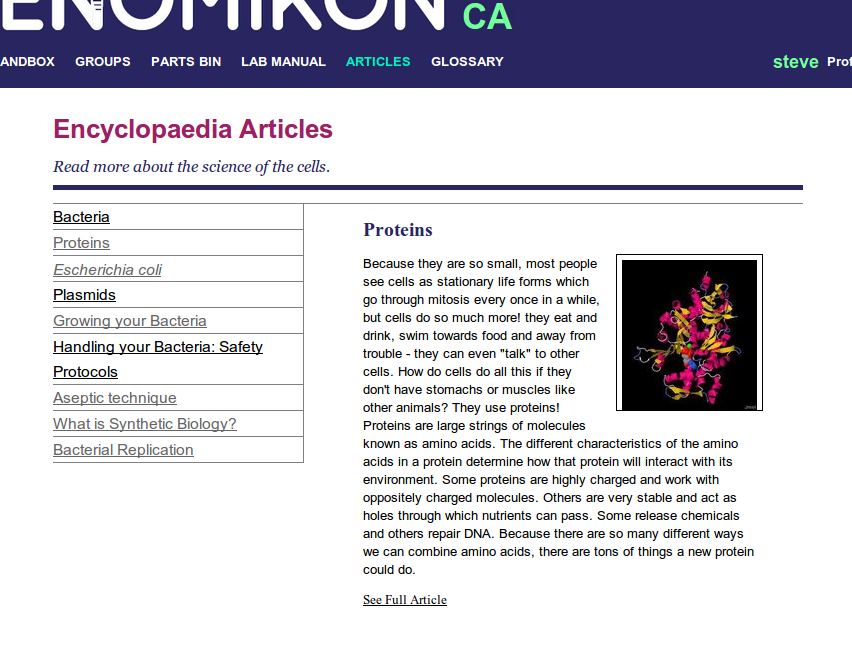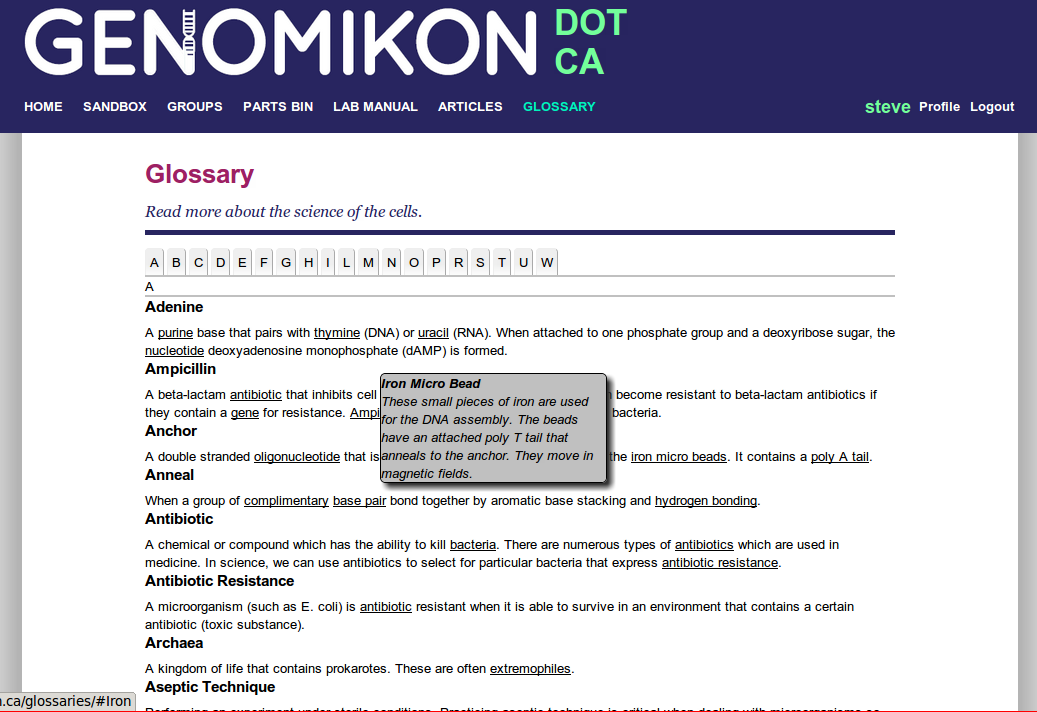Team:Alberta/Software
From 2010.igem.org
(→Get started with your first molecular biology experiments) |
(→Plasmid Design Tool) |
||
| Line 48: | Line 48: | ||
==Plasmid Design Tool== | ==Plasmid Design Tool== | ||
| - | === | + | ===Design your own experimental plasmids=== |
[[Image:Alberta-Screen1.png|200px|thumb|In silico plasmid designer]] | [[Image:Alberta-Screen1.png|200px|thumb|In silico plasmid designer]] | ||
| - | + | ||
| + | To expand the beyond the traditional "recipe in a cookbook" model of the high school science lab, students | ||
| + | are encouraged to design their own plasmids and experiments. With GENOMIKON.CA's intuitive Plasmid Designer, | ||
| + | designing their own unique plasmids is as simple as dragging and dropping parts together on a screen. Students can stick together | ||
| + | any combination of the parts available in the kit ''in silico'' with the guidance of the software to ensure | ||
| + | certain specifications are met (ie the plasmid has an origin of replication, it has some sort of selectable marker, incompatible ends have not been stuck together, etc). | ||
[https://2010.igem.org/Team:Alberta/PartsDesigner Learn more about the plasmid designer here] | [https://2010.igem.org/Team:Alberta/PartsDesigner Learn more about the plasmid designer here] | ||
Revision as of 05:40, 26 October 2010
Genomikon - Companion Software
To assist students in performing their very first molecular biology experiments, we created an online, electronic lab manual to walk them through the process. At [http://www.genomikon.ca GENOMIKON.CA], users of the kit will find an electronic, interactive lab manual. Bringing the lab manual into the twenty-first century, GENOMIKON.CA compliments the kit. It will not only inform students, but also empower them to create their own experiments and share them with the world in an online, DYI molecular biology community.
The Lab Manual
Get started with your first molecular biology experiments
The lab manual starts with a set of experiments of predefined experiments, selected with several criteria in mind:
- Fun
- Completable using only materials available in the kit
- Teach concepts that inline with a high school biology curriculum
- Extend beyond the traditional curriculum to inspire students
We used the Province of Alberta's high school curriculum as a model.
To see specific examples check out the experiments page.
As the students progress through the experiments they can take notes and even upload images of their results.
Plasmid Design Tool
Design your own experimental plasmids
To expand the beyond the traditional "recipe in a cookbook" model of the high school science lab, students are encouraged to design their own plasmids and experiments. With GENOMIKON.CA's intuitive Plasmid Designer, designing their own unique plasmids is as simple as dragging and dropping parts together on a screen. Students can stick together any combination of the parts available in the kit in silico with the guidance of the software to ensure certain specifications are met (ie the plasmid has an origin of replication, it has some sort of selectable marker, incompatible ends have not been stuck together, etc).
Learn more about the plasmid designer here
[http://www.genomikon.ca/sandbox Try the plasmid designer out for yourself right now]
After you create a valid plasmid you can save it and a lab protocol will automatically be created. Then you can edit the instructions, add figures, images and a description. Once your ready click publish and share your cool experiment for others to try.
The Encyclopedia
Develop a deeper understanding
To offer some extra context to the experiments we have included a selection of articles about synthetic biology and various biology concepts relating to the kit and the high school curriculum. They are integrated with the experiments and also available separately for review. [Image:team-alberta-articles.jpg]
An Integrated Glossary
A definition is never further than your pointer
We have an integrated glossary throughout the website for easy access to definitions
File:Team-alberta-articles.jpg
Student Groups & Sharing Your Experiments
Teachers can create groups and have their students join it. This allows classes to communicate with each other
 "
"





